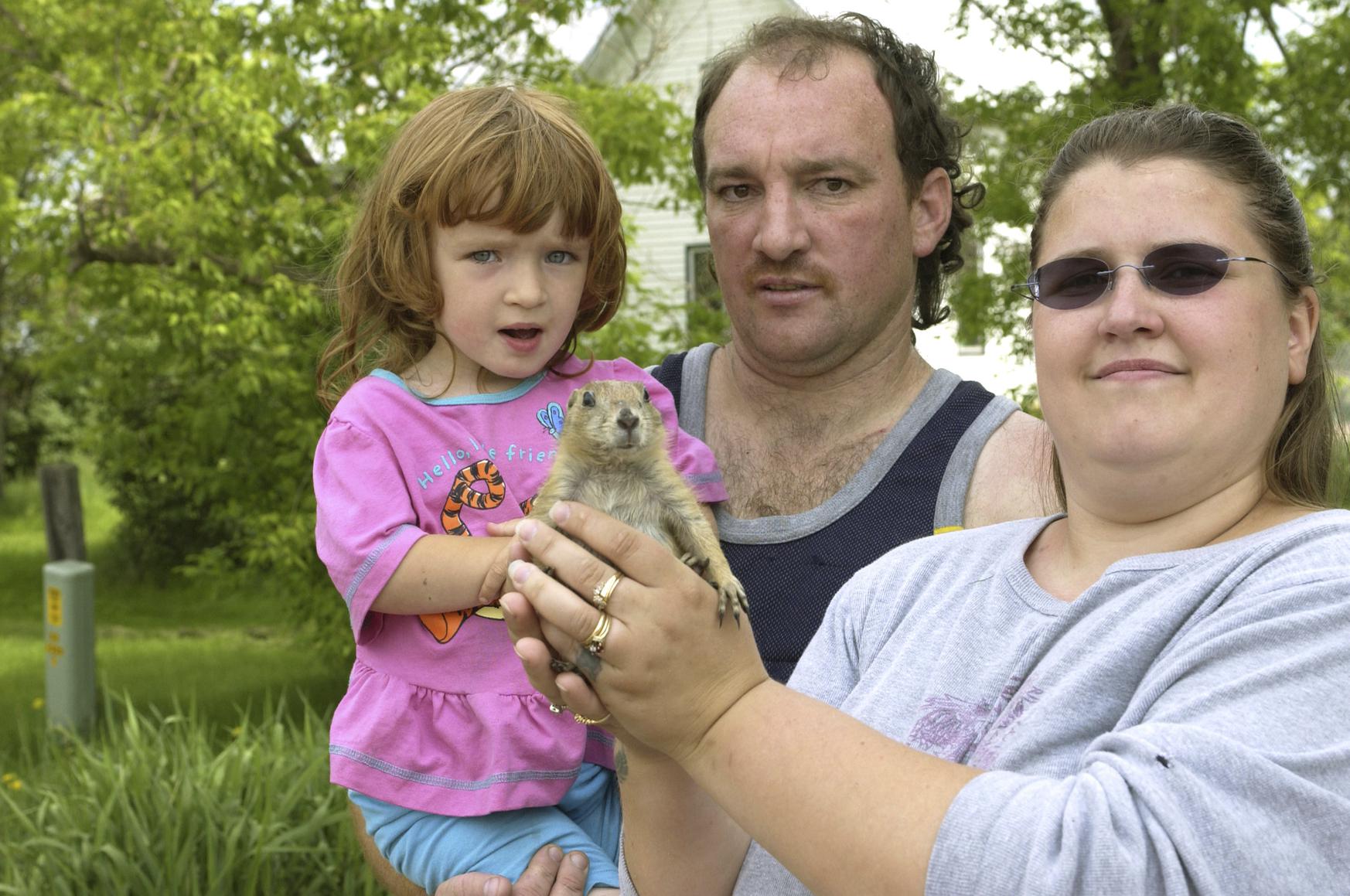- August 15, 2022
- No Comment
- 9 minutes read
Exotic pets first brought monkeypox to the U.S., and 19 years later, we still barely regulate them – San Francisco Chronicle

Shyan and parents Steve and Tammy Kautzer with the prairie dog that gave the child and mother monkeypox in 2003.
Nineteen years ago, a 3-year-old from Wisconsin, Schyan Kautzer, was hospitalized; her small body was covered with a strange rash. Underneath a mop of red hair, her face was warm with a 103-degree fever. A photo from the time shows the girl, wearing a pink Winnie the Pooh shirt, next to her mother, Tammy, who cradles a small pet prairie dog, a gift from Mother’s Day. Barely noticeable is the tiny scab on the child’s index finger where the prairie dog had bitten her.
The cause of her sickness? Monkeypox.
Doctors initially had no reason to suspect the rare viral disease. It had never spread outside Western and Central Africa, and Kautzer had no travel history. The little girl’s illness of unknown origin was written off as an anomaly. When the prairie dog that had bitten her later became sick and died, Kautzer’s mother threw it in the garbage. Soon after though, she also fell ill.
Meanwhile, across the state, a man came into an emergency room with a matching rash — circular lesions that spread and matured into spherical pustules. He worked on the side as an exotic animal dealer, selling wild animals to buyers, including Kautzer’s mother. The man was initially discharged, but later hospitalized as his condition continued to worsen.
When state public health officials discovered the link between the two sets of cases, they asked Tammy Kautzer to fish the dead prairie dog out of the trash for testing. Samples from Wisconsin arrived at Centers for Disease Control and Prevention laboratory in Atlanta, where tests identified the mystery virus. By that June, monkeypox cases had spread to 71 individuals across six states with 18 people requiring hospitalization.
The infected prairie dog and others like it were sourced from one Illinois distributor, who also housed other exotic pets like pouched-rats imported from Ghana. The two shipments had been stored next to each other, allowing the virus to jump from one species to another. Prairie dogs then proved capable hosts, passing the virus on to humans.
Scientists at the time feared that infected animals may spread the virus to native wildlife. Once that happened, there would be little hope of eliminating it. But containing a virus that originated in the exotic pet industry — which moves a wide range of species through disperse channels with little to no regulatory oversight — was no easy task.
In the wake of the outbreak, a U.S. Government Accountability Office report found that, though monkeypox was already well-known to be a viral disease that spreads between animals and humans, what experts refer to as a zoonotic disease, the “CDC did not have a process to conduct a risk assessment on the potential movement of monkeypox to the United States,” and that, if such a risk assessment had been in place, the outbreak might have been prevented.
Today, a new outbreak of the disease has caused a national health emergency, with more than 10,000 confirmed cases across the country. And yet, in the nearly two decades since the last monkeypox outbreak, no comprehensive risk assessment process has been put in place.
Little has changed to stem the import of exotic animals and the diseases they may carry into the United States. We remain the largest consumer market for wildlife on the planet, importing more than 220 million live wild animals per year. For most wildlife, unlike for dogs and cats, there is no disease testing or quarantine required. Officials can approve shipments on paperwork alone, without ever laying eyes on the animals themselves. When animals arrive, some are healthy; others are sick and some have been dead for weeks — but all will likely be cleared for import, provided they are not among the handful of endangered species.
In 2003, that same government government accountability report concluded that, the “CDC generally reacts only when a zoonotic disease problem arises,” that “regulations are limited … and do not comprehensively prevent the importation of animals that are known to present a high risk of zoonotic diseases.” To date, and two years into a global pandemic brought on by the wildlife trade, neither Congress nor the CDC has moved to address these gaps.
The Preventing Future Pandemics Act, which is pending in Congress, would be a good start that would stop live wildlife imports intended for human consumption, but more needs to be done to address other, more common uses, such as exotic pets.
Recently, the U.S. Fish and Wildlife Service announced that it would stop providing public records of wildlife imports, so today, we have even less information available about what animals are coming in and where they are going. Yet, this trade can usher in diseases far more contagious and deadly than monkeypox. HIV, SARS, Ebola and the virus that causes COVID-19 moved through similar channels to reach humans, each driven by the trade in wildlife. HIV and COVID-19 alone have killed over 46 million people to date.
Despite the CDC’s best efforts that summer of 2003, they were able to locate fewer than half of the prairie dogs infected with monkeypox from the original shipment. More than a hundred disappeared through opaque supply chains, where buyers and sellers operate anonymously, and animals are sold without record.
Today, more shipments keep arriving. We don’t know what is in these boxes, and yet we keep opening them. Who knows what virus we’ll order next?
Ann Linder is a wildlife research fellow at Harvard Law School’s Brooks McCormick Jr. Animal Law & Policy Program studying live animal markets and zoonotic disease.

